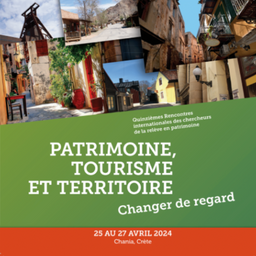Rethinking the relationship between tourism, cultural heritage, and territories through a geohistorical approach to tourist mobility: the example of French and British travelers’ movements in the Near East since the end of the 19th century
My Session Status
We propose to rethink the relationship between tourism, the production of cultural heritage, and territorialization, by focusing on the territorial and heritage construction of the Near East by European tourism since the end of the 19th century.
Using a geohistorical approach, we aim to show how the implementation of tourist circuits and itineraries by two major European powers with close and long-standing ties to this region of the eastern Mediterranean helped to construct a particular way of looking at things, and to elaborate a transnational territory in a geopolitically unstable space crossed by multiple borders. This tourist territory is based on anchor points, the heritage sites, which give it a materiality and crystallize imaginaries strongly imbued with a political and religious dimension.
By taking a long-term approach over a vast area (including the present-day countries of Syria, Israel, Jordan, Lebanon, and the Palestinian Territories), and using maps—produced with the help of survey data—we aim to understand tourist traffic not simply as a consumption of places and experiences, but as a fundamental modality in the processes of heritage-building and the elaboration of territorial constructs. To this end, we wish first to highlight how French and British tourist mobility have contributed to the elaboration of the geographical and geopolitical category of “Near East.” We then wish to highlight the close and long-lasting interaction between these mobilities and the definition of the region’s cultural heritage, by showing on the one hand how French and British travellers contributed to constructing, through their views and practices, the heritage sites of the Near East, and on the other hand how these sites guided travellers’ itineraries, such as those set up by Thomas Cook in the 1870s, and shaped their imaginations.
Our reflections follow in the footsteps of the work of tourism and heritage studies, which have considered the link between tourism and heritage in the context of the advent of societies with “mobile individuals,” where attachment to places and the development of a territoriality are no longer systematically linked to a sedentary lifestyle. The research is based on the analysis of a large corpus of 300 documents (tourist brochures, printed guidebooks, and travel accounts) published and preserved in France and England since 1870, using two databases and three data processing and visualization software packages.
This geohistory of French and British tourist traffic in the Near East enables us to highlight the strength and durability of the tourism/heritage/territory relationship in a Near Eastern space marked by the early development of tourism and heritage, to grasp its genesis and pivotal moments, and to show its continuity as well as its mutations, in relation to the evolution of the societies issuing tourist traffic (in France and the UK) as well as that of the host societies (in the Near East).

Discussion